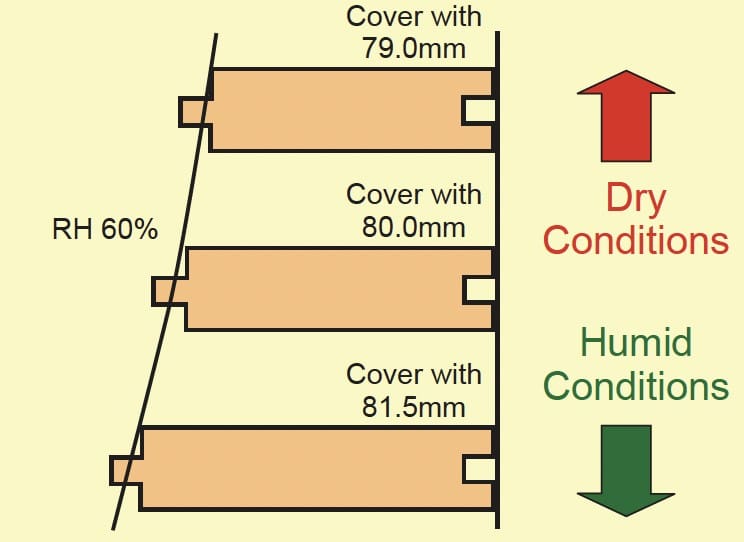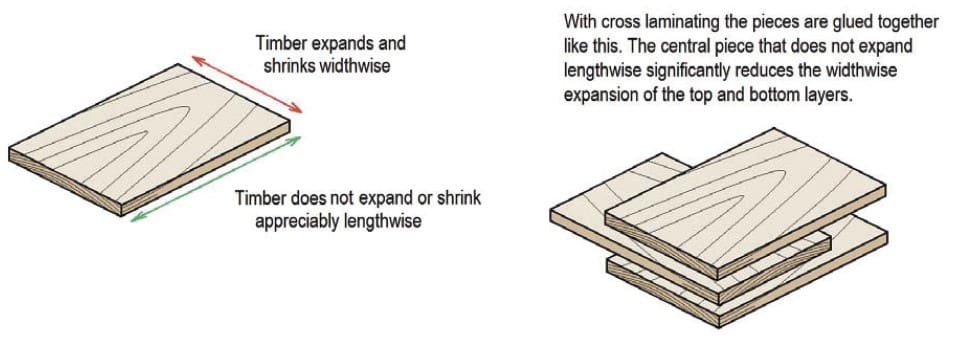Humid Weather
SEASONAL MOVEMENT IN FLOATING FLOORS
MOVEMENT IN SOLID TIMBER
Firstly, we need to consider solid timber flooring and how it shrinks and swells with changing relative humidity. This is shown in the adjacent diagram with board expansion occurring under higher humidity conditions and board shrinkage under lower humidity condition. Although both temperature and humidity alter throughout the day and night, a floor’s response is usually relatively slow, and we often only see minor changes from month to month. However, during prolonged specific wet periods or consistent hot and dry weather things can be different, and a floor may react significantly over the space of a week. It is therefore necessary that every site and the expected in-service environment is assessed for a floor to be able to perform to its optimum and this includes floating floors, engineered, bamboo and laminate.
MOVEMENT IN FLOATED ENGINEERED FLOORS
Engineered flooring differs from solid timber flooring in that it is a generally a multi-layered timber product and the reason for this type of construction is that it reduces the amount of width movement in a board when the moisture content of the flooring changes. Hence, under wet conditions an engineered floor will expand but less than a solid timber floor and similarly under dry conditions it will shrink, but also less than solid timber flooring. Movement is mainly in width but there is also some lengthwise movement, and in this respect, it differs from solid timber flooring.



